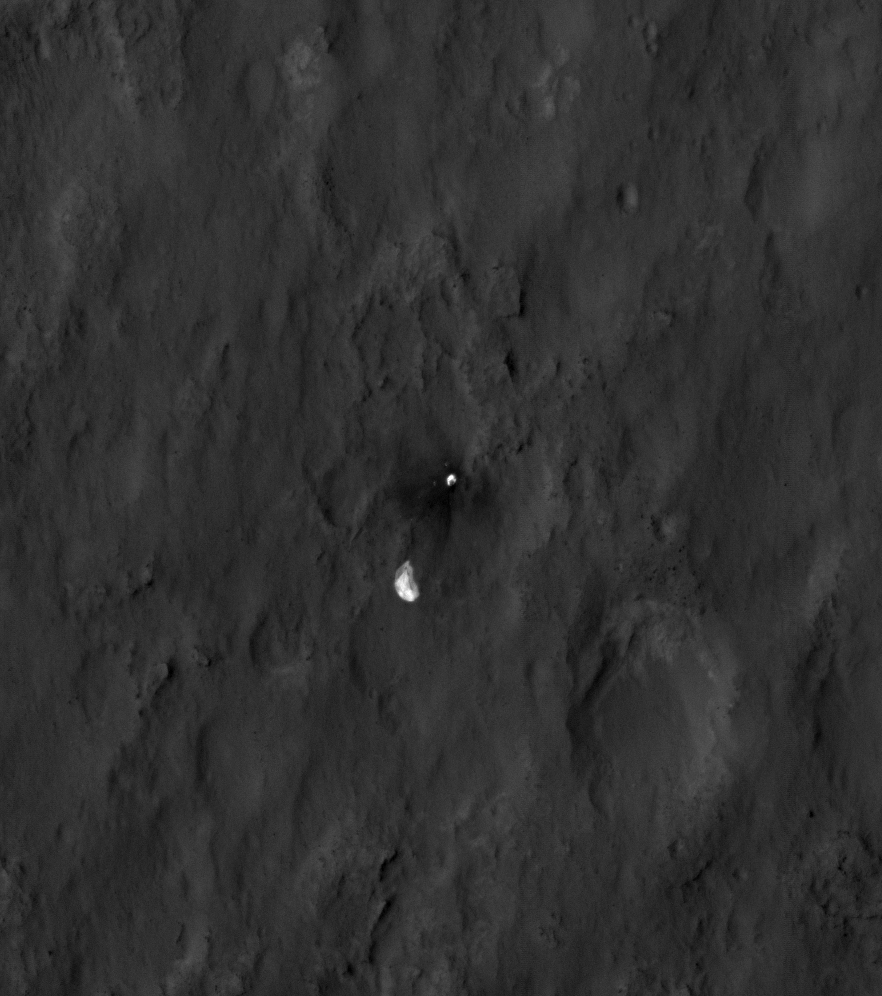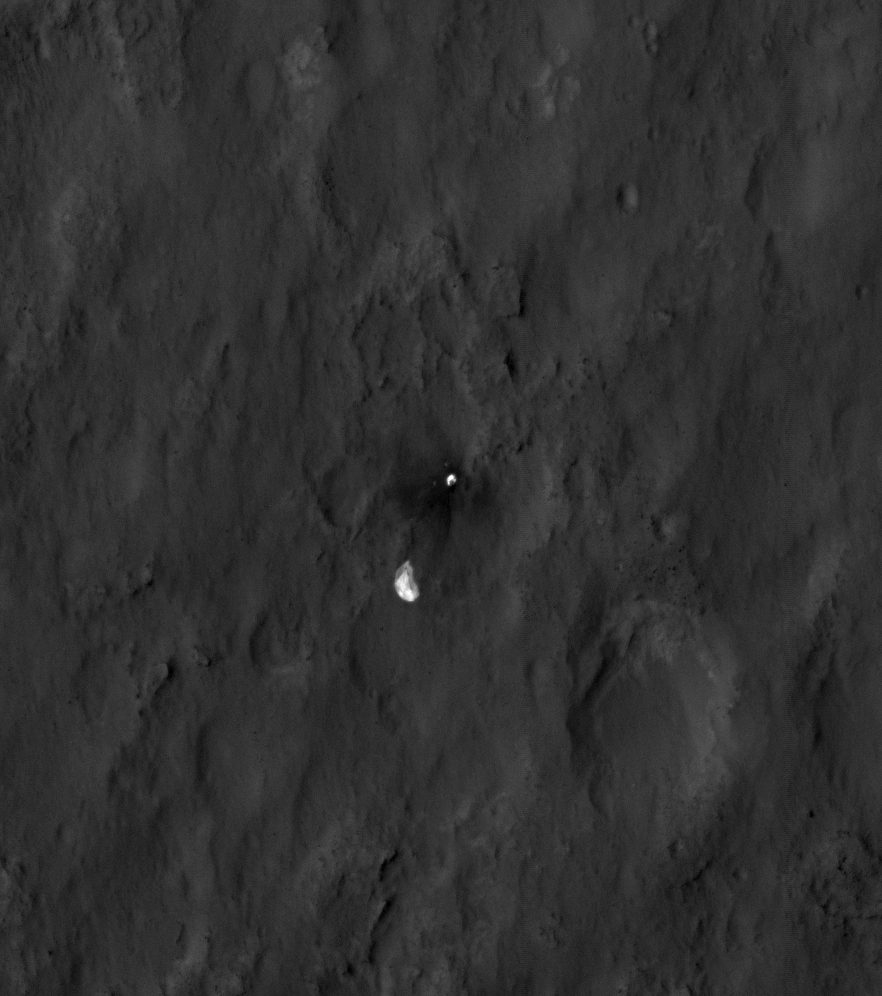Evidence of a Job Well Done

| Credit | NASA/JPL-Caltech/Univ. of Arizona |
|---|---|
| Language |
|
This close-up view shows the rover Curiosity's parachute and back shell strewn across the surface of Mars. The image was captured by the High-Resolution Imaging Science Experiment (HiRISE) camera on NASA's Mars Reconnaissance Orbiter about 24 hours after the parachute helped guide the rover to the surface. When the back shell impacted the ground, bright dust was kicked up, exposing darker material underneath.
This image was acquired from a special 41-degree roll of MRO, larger than the normal 30-degree limit. It rolled towards the west and towards the sun, which increases visible scattering by atmospheric dust as well as the amount of atmosphere the orbiter has to look through, thereby reducing the contrast of surface features. Future images will show the hardware in greater detail. Our view is tilted about 45 degrees from the surface (more than the 41-degree roll due to planetary curvature), like a view out of an airplane window. Tilt the images 90 degrees clockwise to see the surface better from this perspective. The views are primarily of the shadowed side of the rover and other objects.
The image scale is 39 centimeters (15.3 inches) per pixel.
Complete HiRISE image products are available at: http://uahirise.org/releases/msl-descent.php.
HiRISE is one of six instruments on NASA's Mars Reconnaissance Orbiter. The University of Arizona, Tucson, operates the orbiter's HiRISE camera, which was built by Ball Aerospace & Technologies Corp., Boulder, Colo. NASA's Jet Propulsion Laboratory, a division of the California Institute of Technology in Pasadena, manages the Mars Reconnaissance Orbiter Project for NASA's Science Mission Directorate, Washington. Lockheed Martin Space Systems, Denver, built the spacecraft.

